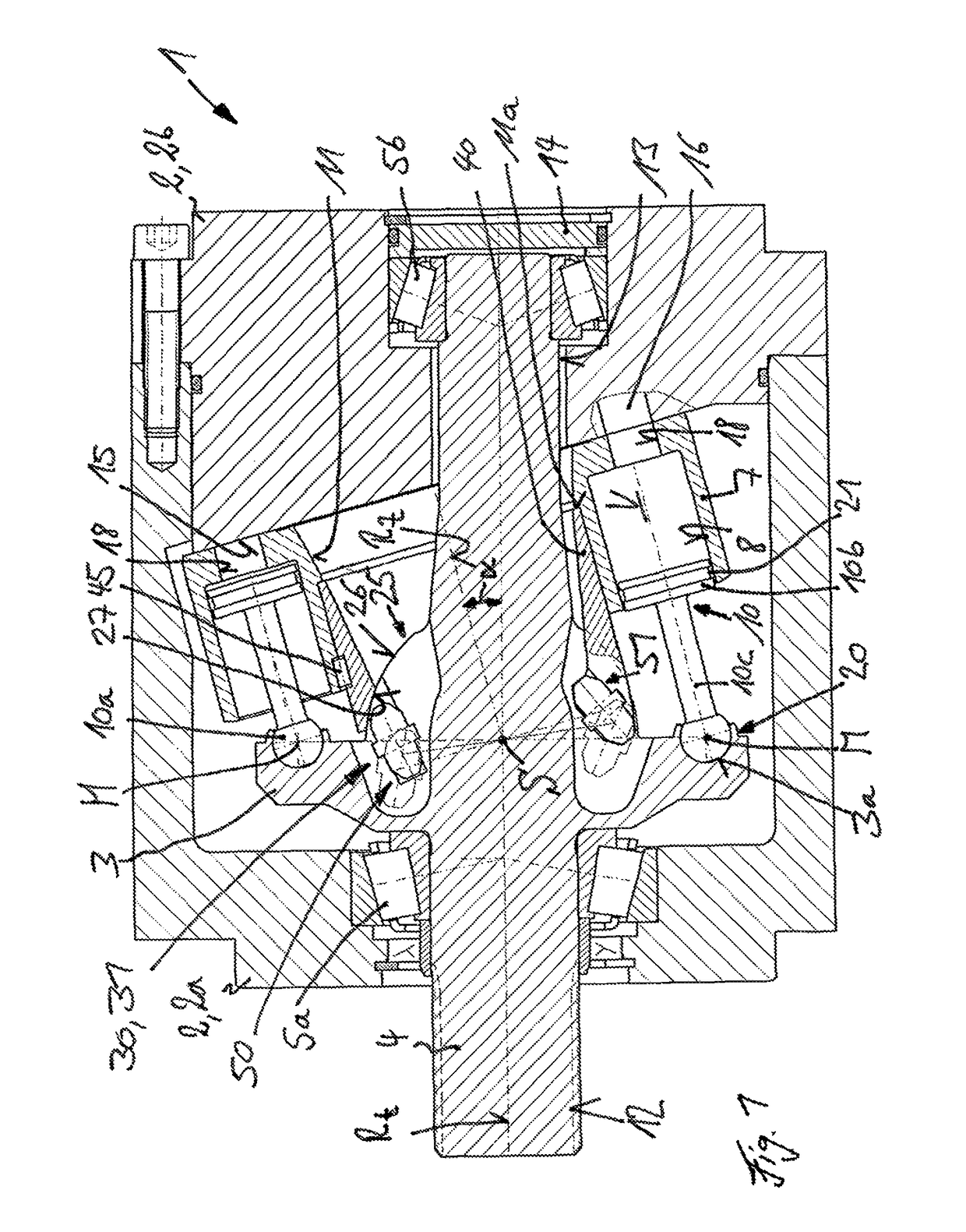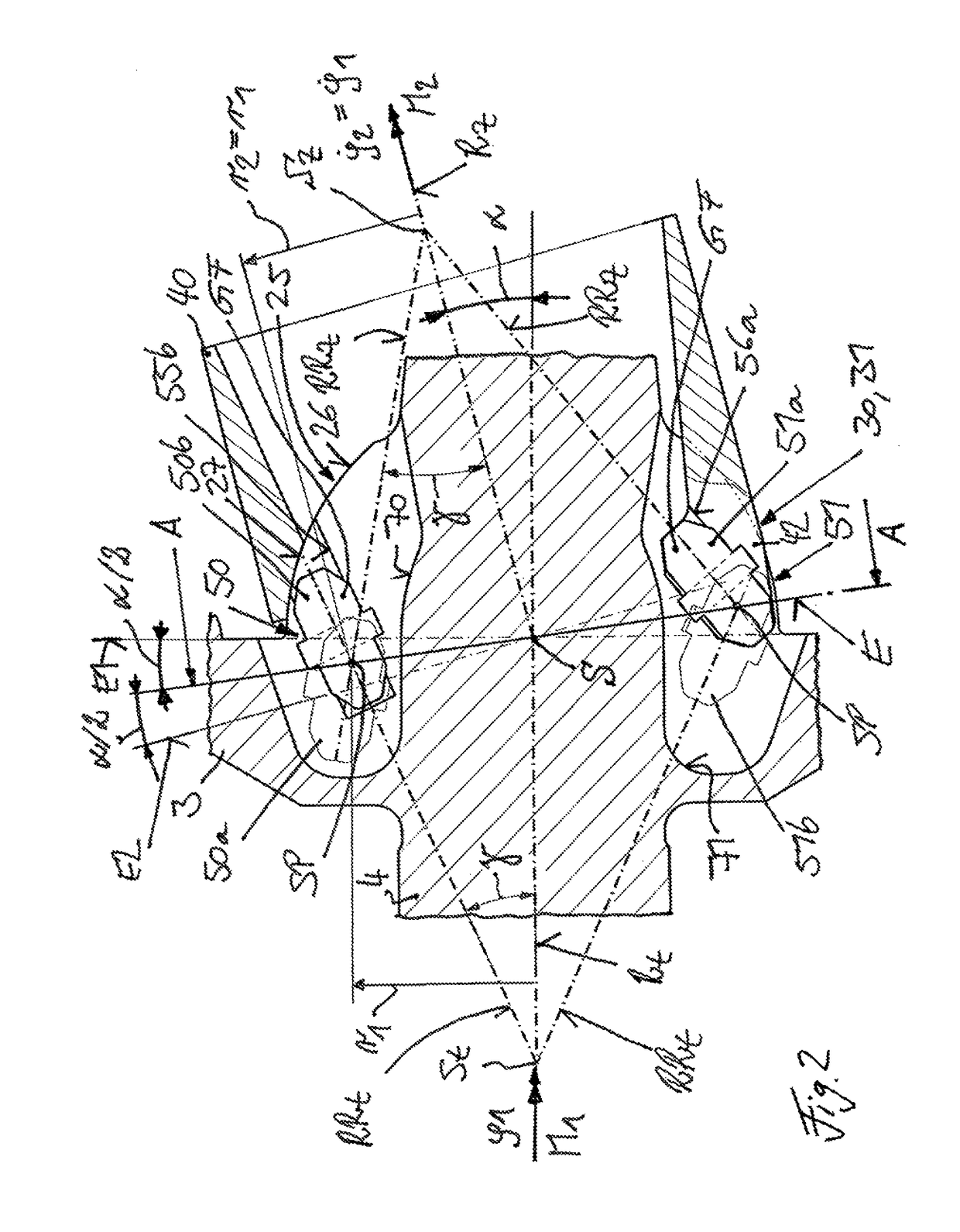Hydrostatic axial piston machine employing a bent-axis construction
a technology of axial piston machine and axial piston, which is applied in the direction of positive displacement liquid engine, mechanical apparatus, pumps, etc., can solve the problems of critical stresses on the components of the axial piston machine, non-uniform torque on the drive shaft, and undesirable noise in the drive train
- Summary
- Abstract
- Description
- Claims
- Application Information
AI Technical Summary
Benefits of technology
Problems solved by technology
Method used
Image
Examples
Embodiment Construction
[0063]The hydrostatic axial piston machine 1 in the form of a bent-axis machine illustrated in FIG. 1 has a housing 2, which includes a housing pot 2a and a housing cover 2b. In the housing 2, a drive shaft 4 provided with the drive flange 3 is rotationally mounted by bearings 5a, 5b so that it can rotate around an axis of rotation Rt. In the illustrated exemplary embodiment, the drive flange 3 is formed in one piece with the drive shaft 4.
[0064]Located axially next to the drive flange 3 in the housing 2 is a cylinder drum 7 which is provided with a plurality of piston bores 8, which are arranged concentrically to an axis of rotation Rz of the cylinder drum 7. In each piston bore 8, there is a longitudinally displaceable piston 10.
[0065]The axis of rotation Rt of the drive shaft 4 intersects the axis of rotation Rz of the cylinder drum 7 at the intersection point S.
[0066]The cylinder drum 7 is provided with a central longitudinal bore 11 which is concentric with the axis of rotation...
PUM
 Login to View More
Login to View More Abstract
Description
Claims
Application Information
 Login to View More
Login to View More - R&D
- Intellectual Property
- Life Sciences
- Materials
- Tech Scout
- Unparalleled Data Quality
- Higher Quality Content
- 60% Fewer Hallucinations
Browse by: Latest US Patents, China's latest patents, Technical Efficacy Thesaurus, Application Domain, Technology Topic, Popular Technical Reports.
© 2025 PatSnap. All rights reserved.Legal|Privacy policy|Modern Slavery Act Transparency Statement|Sitemap|About US| Contact US: help@patsnap.com



